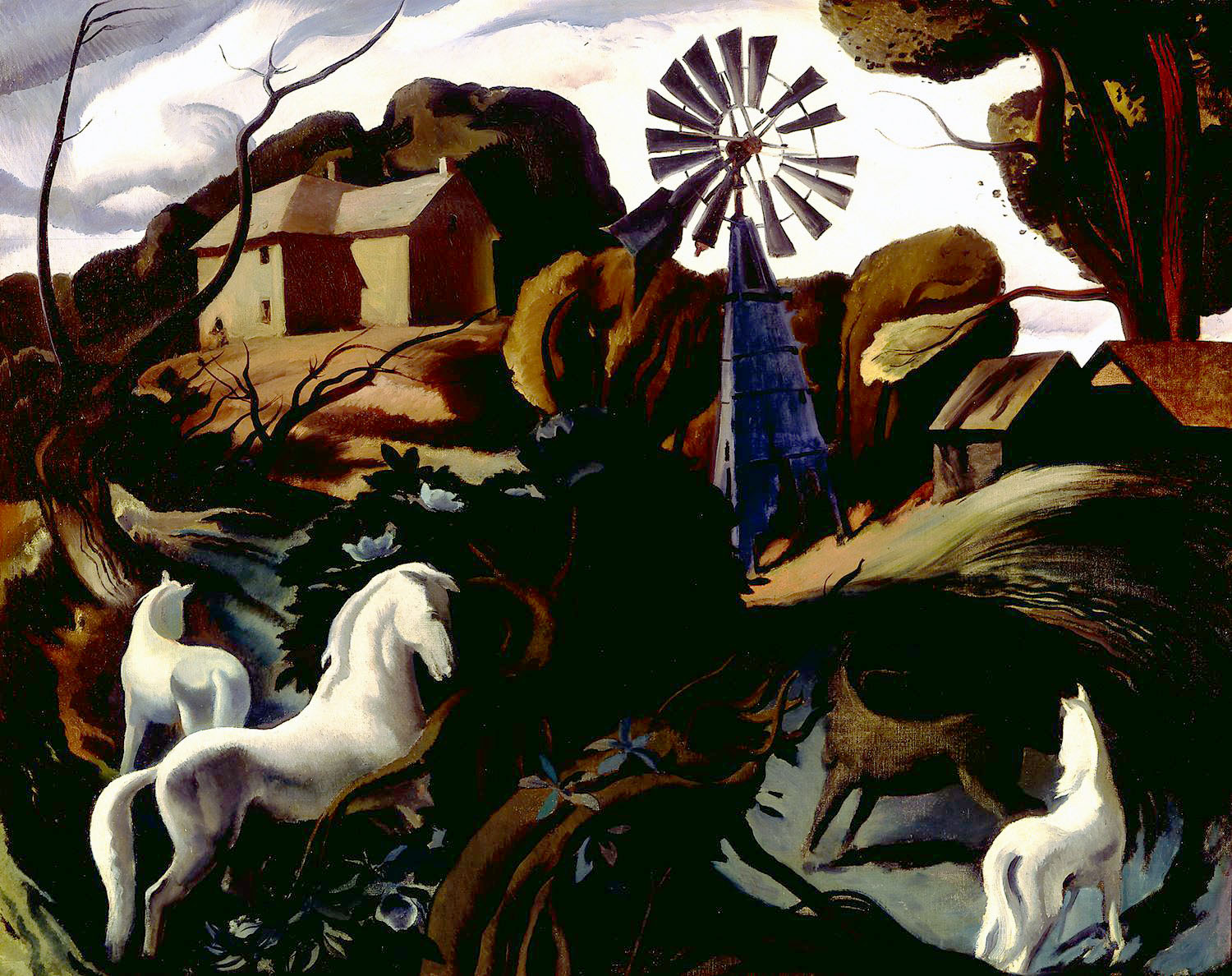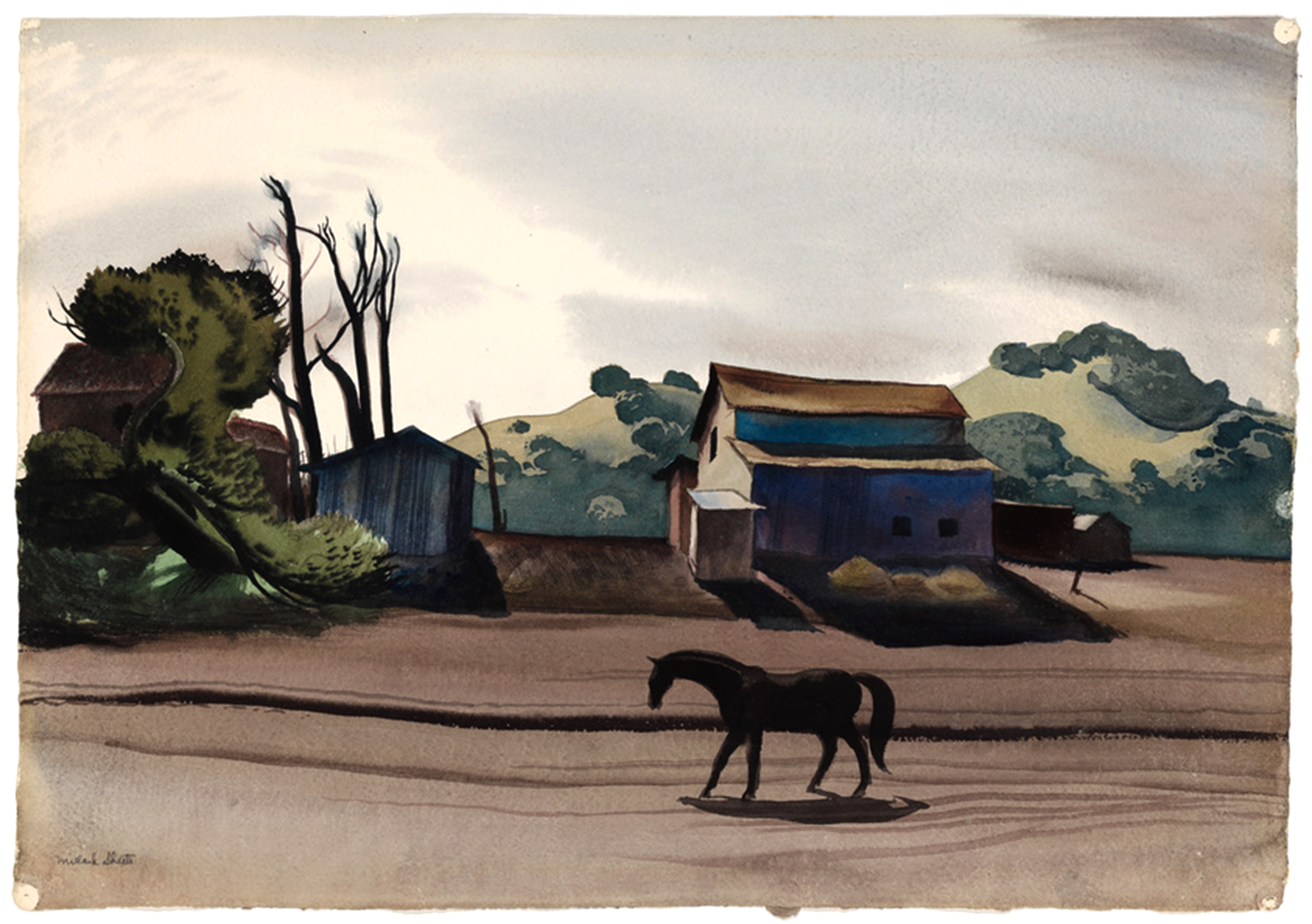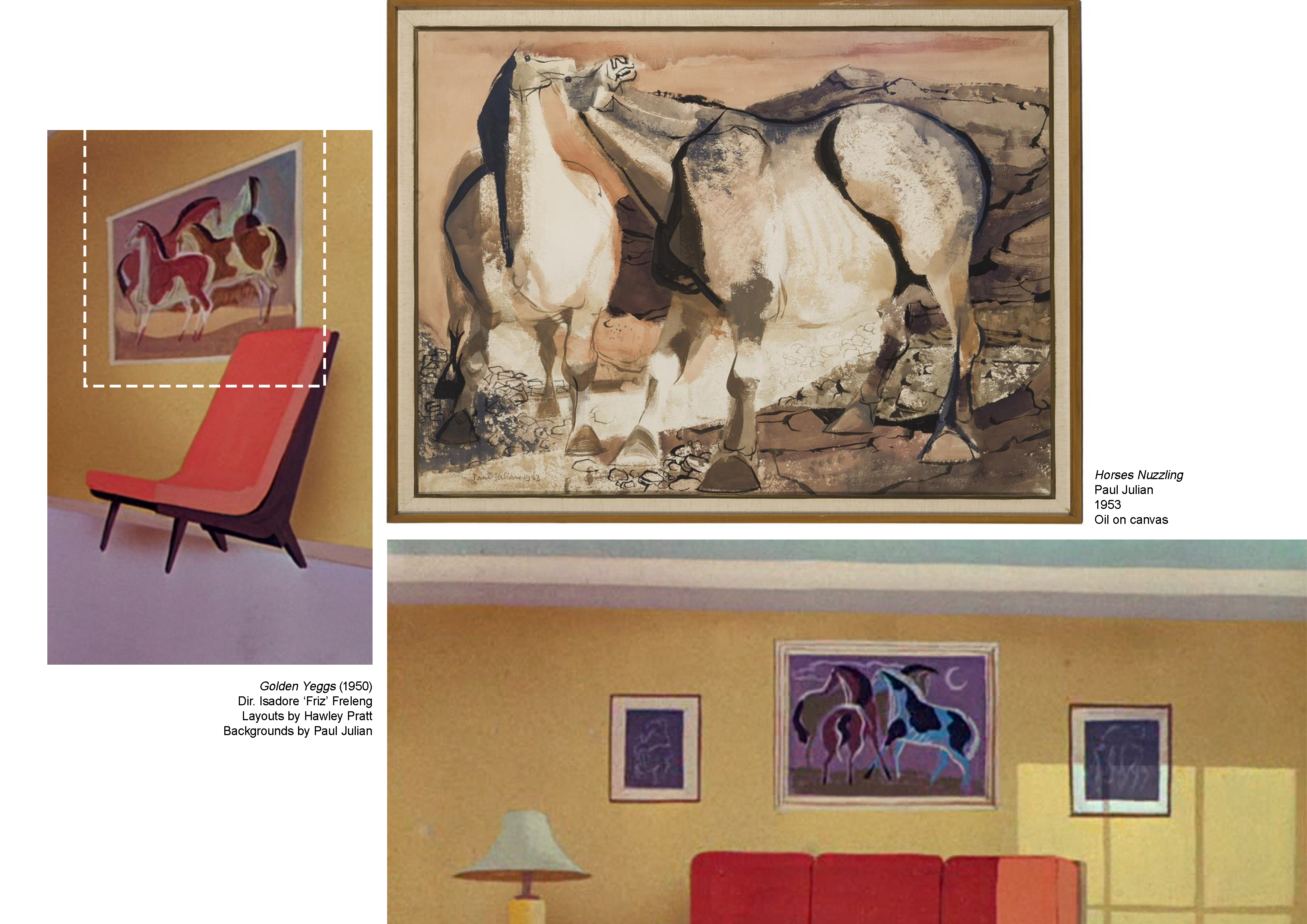
Abandoned
Millard Sheets, 1933
Oil on canvas
Horses. Millard would just never, ever, stop talking about horses. ‘I grew up on my grandfather’s ranch,’ he’d say. ‘They had so many horses, I used to ride the horses. I love horses.’ We know, Millard. Recently, I’ve been thinking about horses. Millard painted some great horses. I’ve been thinking about Millard, and I’ve been painting horses. Small ones, for now; hiding them. Friz doesn’t mind. Hawley rolls his eyes. It doesn’t particularly matter, in the end. I can leave them there.

Abandoned
Millard Sheets, 1933
Oil on canvas
According to information provided at the 2010 exhibition Millard Sheets: The Early Years (1926-1944), held at the Pasadena Museum of California, Sheets was apparently inspired to create the above painting “after seeing an abandoned farm in Riverside, California. The farm was marked for destruction so that the U.S. Army Corps of Engineers could build the Prado Dam flood control system.” Sheets’ mother died in childbirth, and as a result he was left by his father to be raised on his grandfather’s horse ranch on the outskirts of Los Angeles. He began drawing at the age of three and, once the time came, was encouraged to go to art school instead of the local college. He chose to study at Chouinard. Horses featured heavily in Sheets’ work throughout the course of his artistic career as a painter, teacher, and muralist.

Paul leaves things behind sometimes, leaves them for me to find and for you to find in me. Bachelard has some things to say about it, like always. “Each one of us, then, should speak of his roads, his crossroads, his roadside benches; each one of us should make a surveyor's map of his lost fields and meadows... Thus we cover the universe with drawings we have lived.” Paul covers my town with these things. In the desert, past the sharp rocks, its empty enough that sometimes you can hear the horses running underneath the brown and beige.
